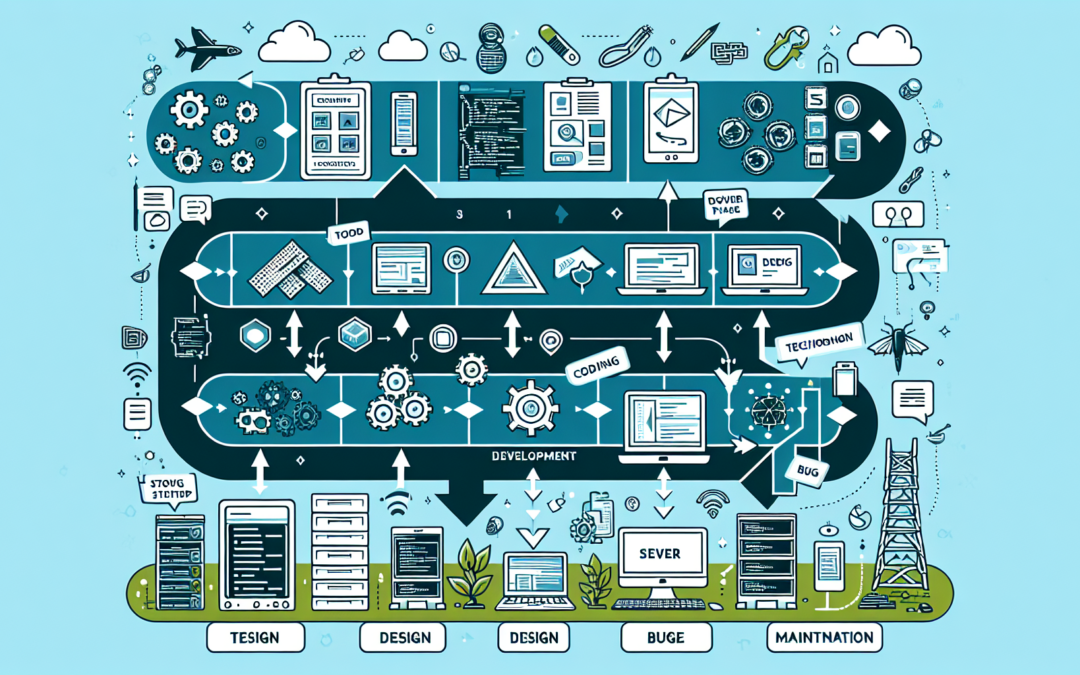Mastering the Art of Website Development: A Spotlight on the Stages of Crafting a Successful Website
From a scribbled idea on a piece of paper to the final launch, the journey of website development is nothing short of a rollercoaster ride filled with various stages that necessitate a diversity of skills. Whether you’re a coding maestro or a novice venturing into the digital sphere, this blog serves as your guide on this thrilling journey. Let us embark on an exploration of the various phases involved in the art of website development.
Stage 1: Assemble your Tools – Making the Right Technology Choices
Choosing the right technology and tools is the first, and possibly the most challenging step of website development. This includes selecting the right platforms, languages, frameworks and database technologies that perfectly suit the website’s requirements. Whether it’s .NET or PHP, MySQL or MongoDB, Angular or React – make your choices wisely for they form the foundation of your website.
Stage 2: Laying the Blueprint – Website Design
The stage of website design is where your ideas start taking shape. Here, UX/UI Designers craft the feel and look of the website, giving user experience paramount importance. Wireframing, prototyping, and design layout development using tools like Adobe XD or Sketch happen here. Remember, a website should not just attract users, but also engage and motivate them to take specific actions.
Stage 3: Crafting the Website – Coding & Development
This stage transforms designs into functional elements. Developers start breathing life into static prototypes by writing the code using selected languages, and the website starts taking tangible form. Front-end developers work on client-side programming, while back-end developers focus on server-side coding for functionality, performance, and security.
Stage 4: The Rigorous Trials – Testing
Testing is a crucial stage where developers nitpick and hunt for bugs across the website. Functional testing, usability testing, compatibility testing and more are conducted rigorously. Tools like Selenium or JMeter may come into play at this stage. The main objective is to ensure smooth, functional, error-free website operation.
Stage 5: The Final Showdown – Deployment
Once the website successfully passes all testing phases, it’s time for it to go live. This includes setting up the live server, domain pointing, file transfer and other tasks. After successful deployment, the website is finally reachable to the general public.
Stage 6: Forever Vigilant – Maintenance & Upgradation
Website development doesn’t end at deployment. In fact, it’s just the beginning of a continual process of maintenance, update and enhancement to keep the website dynamic, evolving, and abreast with the latest trends.
The Road Ahead
The above stages illustrate how many diverse skills, tools, and roles come together in building a successful website. But, remember that trends evolve, tools upgrade, and techniques get refined – constantly. As developers, learning and adapting become our most valuable allies.
Website development might seem complex and overwhelming, but remember, it is this complexity that makes the journey of developing a website worthwhile and fulfilling. So, consider this your roadmap, and take the plunge, for the digital landscape waits to be explored.
Author: Hanzala – Software Engineer
Do you have questions or need further clarification? I’m here to help. Email me anytime at hi@hanzala.co.in
